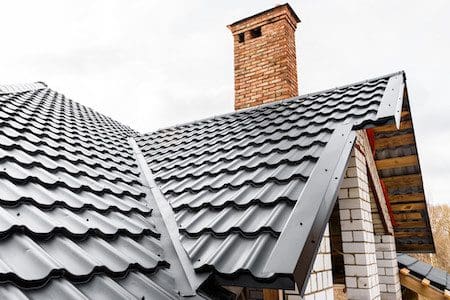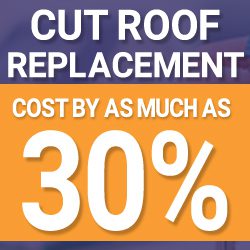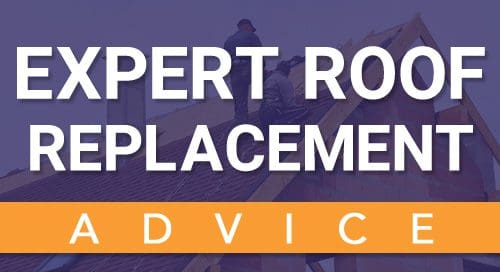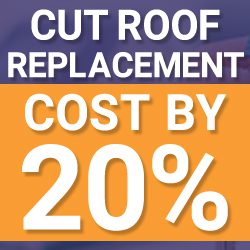
Top 8 Most Affordable Ways to Repair a Roof in 2023
Roofs play a vital role in protecting our homes from external elements, but they are also prone to wear and tear, weather damage, and aging. With rising costs of materials and labor, homeowners often seek affordable ways to repair their roofs without compromising on quality. As we step into 2023, let’s explore the top eight economical methods to mend that overhead shelter without breaking the bank.
COMPARE QUOTES1. Regular Inspections and Maintenance
Proactive care can save significant costs in the long run. Regularly inspecting your roof, especially after extreme weather events, can help identify and address small issues before they become major, costlier problems. Clean gutters, remove debris, and check for damaged or missing shingles.
Ensuring the longevity and stability of your roof goes beyond occasional glances. Regular roof inspections and routine maintenance can not only help in spotting minor problems before they become significant issues but can also enhance the lifespan of the roof. Let’s delve deeper into what roof inspections entail and how they act as a preventive measure.
Importance of Regular Roof Inspections
Just as regular health check-ups can prevent major illnesses, periodic roof inspections can avert extensive damages. These inspections give homeowners a clear picture of their roof’s health, allowing for timely interventions.
Types of Inspections
There are primarily two types of roof inspections:
- Professional Inspections: Hiring experienced roofing contractors to perform a detailed assessment is advisable. They are equipped with the necessary tools and knowledge to spot even the minutest of damages. A thorough professional inspection typically includes checking for water leaks, examining shingles, assessing flashing points, and ensuring proper attic ventilation. Many roofing companies offer free evaluations, hoping you’ll choose them for any required repairs.
- DIY Inspections: While a professional inspection is always more comprehensive, homeowners can also carry out periodic checks. Look for broken or missing shingles, accumulated debris, clogged gutters, and signs of moss or algae growth. Check indoors for signs of water damage, like stains on the ceiling.

Catching Problems Early
Some common early signs of roof problems include:
- Curling or Clawing Shingles: This indicates that the roof is aging and might be more susceptible to leaks or wind uplift.
- Bare Spots and Missing Granules: Poor water shedding and a potential cause for decay.
- Broken or Missing Shingles: This compromises a roof’s ability to shed water and indicates that repairs are needed.
- Buckling Shingles: Visible waved distortions running vertically up the roof slope, often a result of roof age or improperly installed underlayment.
Maintaining a roof’s health is not just about reacting to problems but proactively seeking and rectifying minor issues before they escalate. Whether you opt for professional inspections or decide to take matters into your hands, the key lies in regularity and prompt action. An ounce of prevention, in this case, is indeed worth more than a pound of cure.
COMPARE QUOTES2. Patch Repairs
For localized damage, such as a few missing shingles or a small leak, consider patch repairs. By only focusing on the damaged area and not the entire roof, you can significantly reduce the cost of materials and labor.
Roof patch repairs, as the name suggests, involve fixing a specific, localized area of damage on a roof. This method can be an excellent way to address minor issues without resorting to an extensive roof replacement, especially when the rest of the roof is in good condition. Here’s a deeper look into the realm of patch repairs, the situations best suited for them, and the approach professionals adopt.
Ideal Situations for Patch Repairs
Not every roofing issue requires an entirely new roof or even a large-scale repair job. Some of the typical problems apt for patch repairs include:
- Small Leaks: If your attic shows signs of a minor leak, such as water stains or drips during a rainstorm, it may be easily fixed with a patch repair, provided the rest of the roof is stable.
- Shingle Damage: Whether it’s due to weather conditions or falling debris, occasionally, shingles can become cracked, curled, or even go missing. A patch repair can replace these damaged or missing shingles.
- Flashing Issues: Flashing is typically installed around chimneys, skylights, and roof valleys to direct water away from these areas. If it becomes damaged or deteriorates over time, water can seep into the home. Patch repairs can address these localized flashing problems.

Professional Approach to Patch Repairs
When a roofing professional addresses a patch repair, they follow a series of steps to ensure the job is done right:
- Assessment: The first step is always to assess the extent of the damage. This helps determine the materials needed and ensures that a patch repair is indeed the right solution.
- Preparation: The area around the damaged section is cleaned and prepared. Any debris or old roofing material is removed to provide a solid base for the new material.
- Application: Depending on the type of roof and the nature of the damage, the professional will apply the patch. This could involve nailing down new shingles, sealing a leak, or reinforcing a vulnerable spot on the roof.
- Sealing: Once the new materials are in place, they are sealed to ensure they’re watertight and integrated seamlessly with the rest of the roof. This might be done using roofing cement, adhesive, or other sealants, depending on the roof type.
- Inspection: After the repair, a final inspection ensures that the problem has been addressed effectively and checks for any adjacent areas that might have been affected.
Patch repairs, when done correctly, can add years to the life of a roof. It’s an economical way to maintain the roof’s health and ensure that small issues don’t escalate into bigger problems. However, as with all roofing concerns, the key lies in early detection and timely intervention. It’s always wise to consult a roofing professional if you suspect any issues with your roof.
COMPARE QUOTES3. Roofing Over
Instead of tearing off the old roof, one can opt for roofing over. This method involves laying a new set of shingles over the existing ones. However, this can only be done once, as most building codes restrict having more than two shingle layers.
The process begins with a thorough inspection to ascertain the viability of roofing over. If the existing shingles are in reasonably good shape without extensive curling, sagging, or damage, a roofing over approach can be considered.
- Preparing the Existing Roof: Any loose or damaged shingles are secured or replaced, ensuring a stable base. Protruding nails are hammered down, and valleys or flashing are addressed as needed.
- Laying the New Shingles: New shingles are laid directly over the old ones. They are aligned properly to avoid seams from matching, ensuring a smooth, watertight finish.
- Finishing Touches: Edges are secured, flashing around vents, chimneys, and other roof protrusions are checked and replaced if needed. Ridge caps are added last, and the entire roof surface is inspected for quality assurance.

When is Roofing Over Compatible?
Not all roofs are candidates for this method. Here are some criteria that make a roof suitable for a layover:
- Shingle Type: Asphalt shingles are the most common type used for roofing over, given their flexibility and adaptability. It’s essential to ensure the new shingles are compatible with the existing ones.
- Existing Layers: Building codes in many areas restrict the number of shingle layers on a roof, often limited to two. If a roof already has two layers, roofing over isn’t an option, and a complete tear-off will be necessary.
- Roof’s Structural Integrity: The roof’s structure must be sound without any sagging or substantial damage. Adding another layer will increase the weight on the roof, so its ability to bear this additional weight is crucial.
- No Major Issues: If there’s significant water damage, rot, or mold, roofing over isn’t recommended. The underlying issues need to be addressed first, which typically requires a full tear-off.
Roofing over can be a cost-effective and efficient way to extend a roof’s lifespan without the mess and expense of a complete roof replacement. However, it’s not a universal solution. Consulting with roofing professionals, understanding the existing roof’s condition, and weighing the pros and cons are vital before deciding on this method.
COMPARE QUOTES4. DIY Small Repairs
If you possess the necessary skills and confidence, you might consider handling minor repairs yourself. This approach eliminates labor costs. However, ensure you understand the nuances of roofing work, or you might end up escalating the problem.
5. Reclaimed Materials
If material replacement is needed, consider using reclaimed or recycled roofing materials. These are often just as reliable as new materials but come at a fraction of the cost.
6. Sealants and Roofing Cement
For minor leaks or gaps, roofing cement or sealants can offer a temporary fix. These solutions can buy time until more extensive repairs or replacement can be done.
Roof leaks, however small, can lead to significant problems if left untreated. Fortunately, simple solutions like sealants and roofing cement can often provide quick and efficient remedies. These materials can patch minor vulnerabilities in a roof, ensuring it remains watertight and extending its lifespan. Let’s delve deeper into the world of sealants and roofing cement, exploring their applications, benefits, and methods of use.

Understanding Sealants
Sealants are usually fluid materials that solidify after application, preventing the passage of liquids through openings or joints. In roofing, sealants have various applications:
- Flashing Seams: Flashings, which are typically metal pieces around chimneys, vents, or the joining of different roof sections, often have seams that can become vulnerable to leaks. Sealants ensure these seams remain impervious to water.
- Roof Penetrations: Anything that protrudes from the roof, like pipes or vents, can be a potential entry point for water. Applying sealants around these areas offers an added layer of protection.
- Roof Edges: The edges of roofs, especially on flat roofing systems, can benefit from sealants to prevent water ingress.
Roofing Cement: The Go-To Solution for Bigger Gaps
Roofing cement is a thick, mastic compound used for larger gaps or areas where a typical sealant might not be sufficient. It’s especially effective for:
- Filling Large Holes: If the roof has noticeable damage, like a hole caused by fallen debris, roofing cement can fill and seal the gap temporarily until a more permanent roof repair can be executed.
- Securing Loose Shingles: Over time, shingles might become loose. A dab of roofing cement beneath the shingle can help secure it back in place.
- Chimney and Roof Junctions: These critical intersections often face a lot of water runoff. Roofing cement ensures a robust and waterproof bond between the roof material and the chimney base.
How to Apply Sealants and Roofing Cement
The process of applying these materials is straightforward, but care is required to ensure effective sealing:
- Surface Preparation: Before applying, ensure the surface is clean, dry, and free from debris or dust.
- Application: For sealants, a caulking gun is often used. The material is applied smoothly, ensuring all gaps are covered. For roofing cement, a trowel or spatula spreads the compound over the area, pressing it down to ensure a solid bond.
- Curing: After application, it’s essential to let the materials cure for the duration specified by the manufacturer. This ensures optimal performance and longevity.
While sealants and roofing cement provide valuable tools in the arsenal of roof maintenance, it’s essential to recognize when professional intervention is required. Regularly inspecting the roof and addressing minor issues promptly can save significant time and money in the long run. As always, when in doubt, consult with roofing professionals to ensure your roof remains in the best possible condition.
7. Group Repairs with Neighbors
If several houses in your neighborhood were built around the same time, chances are others may also need roof repairs. Grouping together and hiring a contractor for multiple homes can often lead to bulk discounts.
8. Negotiate Labor Costs
During off-peak seasons, roofers might not have as much work lined up. It’s a suitable time to negotiate. Always get multiple estimates, compare them, and don’t shy away from discussing a potential discount.
COMPARE QUOTESWhile affordability is crucial, it’s essential to ensure that the quality of repairs is not compromised. Substandard work can lead to more significant issues in the future. Always weigh the immediate cost savings against the potential long-term costs. With a little research, negotiation, and preventative measures, you can ensure that your roof stands strong without emptying your wallet.

The Cost Spectrum of Roof Repairs
When it comes to repairing a roof, the costs can vary greatly, depending largely on the extent of the damage, the type of material, and labor charges in your area. While materials play a big role, other factors include the complexity of the job, accessibility of the roof, and whether any structures like chimneys or skylights need work.
Average Cost of Common Roof Repairs
- Minor Repairs: Typically, minor fixes like sealing leaks or replacing a few shingles can range from $150 to $400.
- Moderate Repairs: For medium-sized issues, such as replacing a section of shingles or fixing flashing, you could be looking at $400 to $1,000.
- Major Repairs: More severe damages, like repairing underlayment or fixing large sections of a roof, can run between $1,000 to $3,000.
Roofing Materials and Their Repair Costs
- Asphalt Shingles: One of the most common roofing materials, asphalt shingles generally cost between $90 to $100 per square for repair.
- Wooden Shingles or Shakes: Wood can be pricier, averaging around $140 to $160 per square for repairs.
- Metal Roofing: Metal roof repairs typically range from $120 to $900 per 100 square feet, depending on the type of metal used.
- Tile (Clay or Concrete): Repairing tile roofs can cost between $300 and $1,350 for every 100 square feet due to the weight and delicacy of the tiles.
- Slate: Slate repairs can be particularly expensive, ranging from $600 to $1,500 per 100 square feet because of the specialized skills required and the cost of materials.
- Flat, Foam, or Single Ply Roofing: Repairs for these types of roofs generally cost between $400 to $1,200 per 100 square feet.
Labor Costs and Geographical Location Considerations: The Hidden Expense
Labor often contributes a significant portion of the repair costs, and can vary depending on where you live, the complexity of the job, and the experience of the contractor. The region you’re in can significantly influence repair costs. For instance, roofing services might be pricier in areas with a high cost of living compared to more rural regions.

Is Insurance a Viable Option?
If the damage to your roof was caused by a natural disaster or accident, your homeowner’s insurance might cover some or all of the repair costs. However, wear and tear over time is typically not covered.
If the cost of repairs approaches 50% of the cost of a new roof, it might be more economical to consider a full roof replacement. Always get quotes from multiple contractors and ensure they have good reviews and references. This ensures you’re not only getting a fair price but also quality workmanship. Navigating the complexities of insurance can be daunting, especially when it comes to understanding what’s covered in terms of roof repairs. Here’s a breakdown to help you understand roofing insurance better.
Homeowners Insurance and Roof Repairs
In general, homeowners insurance will cover costs for damages that are unexpected and not the result of neglect. However, the extent of this coverage can vary based on several factors:
- Cause of Damage: If the damage to the roof was caused by an act of nature or a sudden accidental event, such as a windstorm, hail, or a tree falling, your insurance would likely cover the repairs. However, damages resulting from wear and tear or neglect over time typically won’t be covered.
- Age of the Roof: Some insurance policies will consider the age of the roof when determining the amount of coverage. For instance, if the roof is less than 10 years old, you might be reimbursed for a full replacement, but if it’s older, you might only receive compensation for the depreciated value.
Specialized Roofing Insurance
In addition to standard homeowners insurance, there are specialized insurance policies aimed specifically at roofs:
- Roof Repair Insurance: This is a separate policy or an endorsement that can be added to your homeowners insurance. It specifically covers roof repairs, but it’s crucial to read the terms closely to understand what’s covered and what isn’t.
- Full Replacement Insurance: If your roof is severely damaged beyond repair, this policy will cover the entire replacement cost, without taking into account the roof’s age or depreciation.
Steps to Ensure Coverage
Documentation: Regularly document the condition of your roof with photos and dates. This can serve as proof that any damage was sudden and not due to neglect.
Regular Maintenance: Keep a log of maintenance work and inspections. A well-maintained roof stands a better chance of being covered by insurance.
Understand Your Policy: Sit down with your insurance agent to go over your policy in detail. Know the limitations, deductibles, and any exclusions. This will help you avoid surprises when you make a claim.
Roof repairs can be costly, but understanding and using your insurance can significantly ease the financial burden. Stay informed, maintain your roof, and ensure that you have the right insurance coverage for your needs. Always review and update your policy as necessary, especially after major home upgrades or changes.

The Importance of Quality in Roof Repairs
It’s crucial not to simply go with the cheapest option available when considering roof repairs. While saving money upfront might seem appealing, compromising on quality can lead to additional costs in the long run due to poor workmanship or substandard materials. Quality repairs can extend the lifespan of your roof and offer better protection against the elements, ensuring that you get good value for your money.
Credibility and Trustworthiness of Your Contractor
According to the Better Business Bureau (BBB), one essential step homeowners should take before hiring a roofing contractor is to check their ratings and reviews on the BBB website. It gives insights into previous customers’ experiences, the company’s history of complaints, and their resolution strategies. A BBB accredited business signifies adherence to established trust and transparency standards.
Many reputable roofing companies offer warranties on their work. This not only indicates confidence in their craftsmanship but also provides homeowners with peace of mind knowing that any issues arising from the repair work within the warranty period will be addressed at no extra cost. Even after the repairs are completed, it’s wise to schedule regular roof maintenance. These check-ups can catch potential problems early, before they escalate into larger, more expensive issues.
Investing in your roof is essentially investing in the protection of your entire home. By choosing quality over cost, checking the credibility of your contractor, and ensuring regular maintenance, you can ensure a long-lasting, sturdy roof that offers optimal protection.
COMPARE QUOTES


Leave a Reply